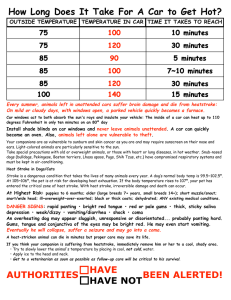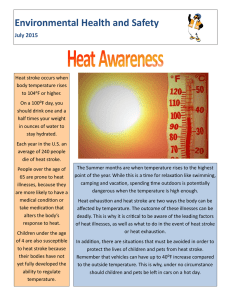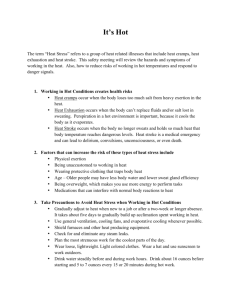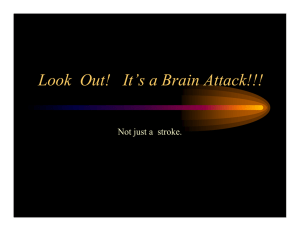Climate Change and Heat Stroke
advertisement
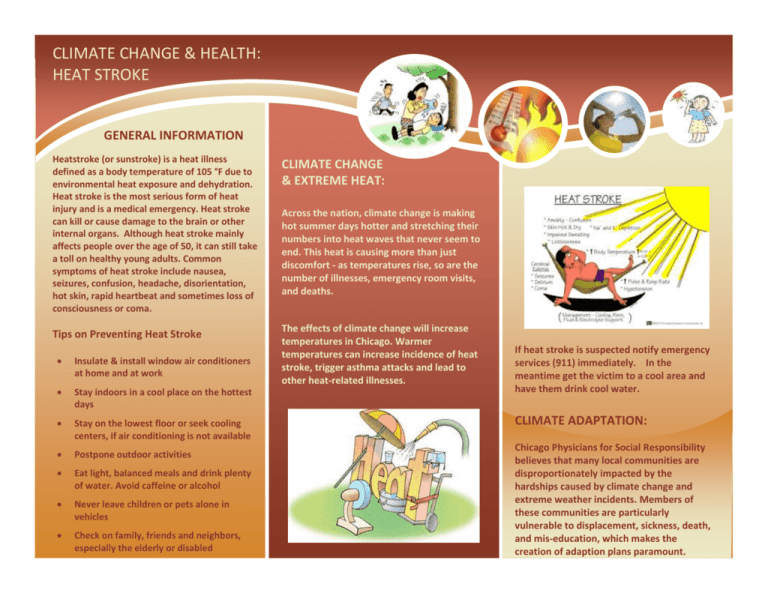
CLIMATE CHANGE & HEALTH: HEAT STROKE GENERAL INFORMATION Heatstroke (or sunstroke) is a heat illness defined as a body temperature of 105 °F due to environmental heat exposure and dehydration. Heat stroke is the most serious form of heat injury and is a medical emergency. Heat stroke can kill or cause damage to the brain or other internal organs. Although heat stroke mainly affects people over the age of 50, it can still take a toll on healthy young adults. Common symptoms of heat stroke include nausea, seizures, confusion, headache, disorientation, hot skin, rapid heartbeat and sometimes loss of consciousness or coma. Tips on Preventing Heat Stroke Insulate & install window air conditioners at home and at work Stay indoors in a cool place on the hottest days Stay on the lowest floor or seek cooling centers, if air conditioning is not available Postpone outdoor activities Eat light, balanced meals and drink plenty of water. Avoid caffeine or alcohol Never leave children or pets alone in vehicles Check on family, friends and neighbors, especially the elderly or disabled CLIMATE CHANGE & EXTREME HEAT: Across the nation, climate change is making hot summer days hotter and stretching their numbers into heat waves that never seem to end. This heat is causing more than just discomfort - as temperatures rise, so are the number of illnesses, emergency room visits, and deaths. The effects of climate change will increase temperatures in Chicago. Warmer temperatures can increase incidence of heat stroke, trigger asthma attacks and lead to other heat-related illnesses. If heat stroke is suspected notify emergency services (911) immediately. In the meantime get the victim to a cool area and have them drink cool water. CLIMATE ADAPTATION: Chicago Physicians for Social Responsibility believes that many local communities are disproportionately impacted by the hardships caused by climate change and extreme weather incidents. Members of these communities are particularly vulnerable to displacement, sickness, death, and mis-education, which makes the creation of adaption plans paramount.



